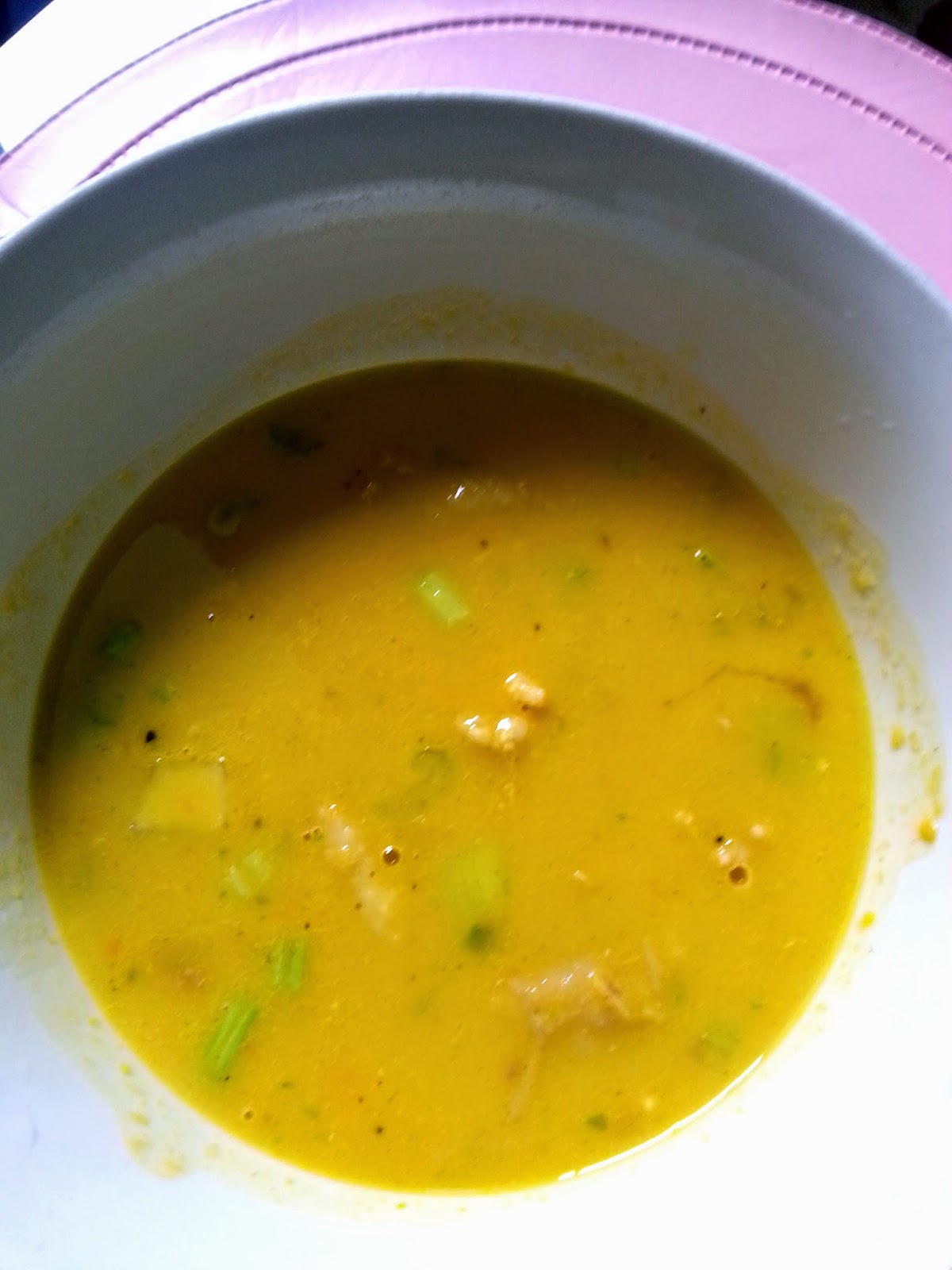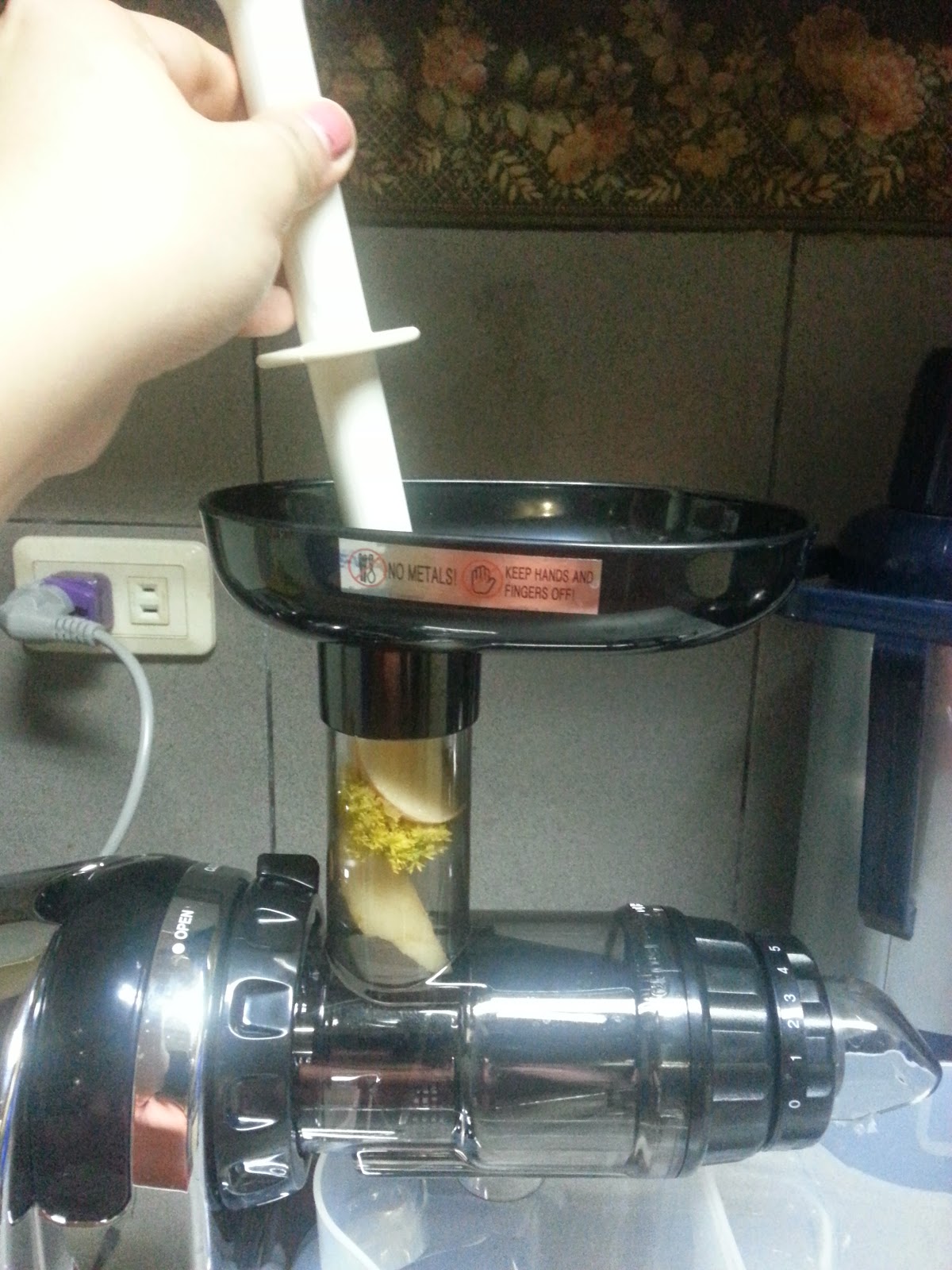When buying a new juicer, there are always two questions:
1)
What kind of juicer do I need, and
2)
How much money do I need to shell out to get it?
There are basically two kinds of juicers to choose from: the
centrifugal juicer, which is cheaper, and the more expensive slow juicer.
If you’re a beginner, or just an occasional juicer, the centrifugal
juicer will probably suit your current juicing needs. Prices of centrifugal
juicers in the Philippines range between PhP 1,000 and PhP 8,000. Some
reputable brands of centrifugal juicers are Breville, Jack Lalanne, and Black
& Decker. Lazada.com recommends local brands like Imarflex, Hanabishi,
Caribbean (this I’m not familiar with), and Moulinex, describing them as “durable”.
As a beginner, I started with this centrifugal juicer, a
hand-me-down from my mom.
My Fujitech is probably a decade old, but it’s still fully
functional. A durable brand, probably because it’s made in Japan. It initiated
me well into the healthy habit of juicing. I got so committed, actually, that I
sent back this juicer to Mama to encourage her (and the rest of our family) to
take up juicing.
My “sophomore” juicer
is also a centrifugal one, a birthday gift from hubby lovey.
Bought on sale for around PhP 3,500, it seemed like a good
buy at that time (See my initial review in Idiot’s Guide to Buying a New Juicer). All in all, not really bad. But I do have some thumbs-down notes:
- It’s a hassle to clean (like many centrifugal
juicers, I suppose). Especially if you’re juicing leafy vegetables.
- And you will have to clean it at least once
during in the middle of a juicing session, because the centrifugal blade (that
thing which grinds up the fruit and veggie into juice) easily gets clogged.
- And when the centrifugal blade gets clogged, the
entire juicer rattles. Violently. Worst case scenario: the juice bin detaches
from its hook and topples over, spilling all that precious juice you’ve worked
so hard to extract! (This happened more than once! Curses!)
Despite its shortcomings, the Jumpstart Juicer is generally
tolerable. But since I’ve made a commitment to juice for the rest of my life, I
realized it would be wiser to get a juicer that would juice more efficiently so
that I can cut down on weekly fruit-and-veggie shopping expenses.
And that realization led me to this:
 |
| HUROM horizontal DA 1000 slow juicer |
Say hello to my newest baby – the Hurom DA 1000 slow juicer.
If you’re a serious juicer like me, a slow juicer (or
cold-press juicer / masticating juicer) is the best option. Compared to
centrifugal juicers, slow juicer can squeeze more juice out of food by as much
as 50% (I’ve proven that myself!). This minimizes expenses on fruits and
veggies, and saves you money in the long run.
Now it’s just a matter of which brand of slow juicer to
pick. The choice is between two reputable brands: Matstone and Hurom. They are both good, so for me it really boils
down to which is cheaper.
I got this Hurom juicer at Lazada.com at a discounted price
of PhP 9,450 (regular price was PhP 11,000). When it finally arrived at my
doorstep, I felt like a little kid opening a very big present on Christmas day!
I was only interested in juicing, but apparently my Hurom
can do a little bit more—it’s equipped to make ice cream, sorbets, pasta (this
one I will definitely have to try one of these days!), soups, salad dressings,
and even baby food.
There’s also a recipe book included, plus this pretty
pitcher-and-glass set. A nice surprise!
I’ve been using this baby for a week and so far…it’s stolen
my heart. I’m just so in love with it, I want to take it to bed with me. Here
are my notes:
- - The pulp is amazingly dry---amazing for me, who hasn’t
experienced pulp this dry from my first two centrifugal juicers.
- -
And because the pulp is squeezed dry, there’s
more juice for me! I tested this. Using the same recipe, I compared the amount
of juices extracted by the centrifugal juicer and the slow juicer. With the centrifugal
juicer, I got 250ml of juice. With the slow juicer, I got almost 500ml. The
slow juicer gave me almost 50% more juice than my old juicer. A saver!
- Easy to clean, compared to our centrifugal
juicers. It even comes with a cleaning
brush!
- It just hums quietly while working. No whirring
sounds. No violent rattling.
- For a supposedly “slow” juicer, I was surprised
that it juices quite quickly. It uses the same amount of time as my centrifugal
does (maybe even less, because with the slow juicer I don’t need to stop midway
to do some “unclogging”). It’s a lot like feeding a pet—you put food into its
mouth and it just keeps chewing.
- On the downside, you will have to chop the food
into small slices before you feed it to the juicer.Otherwise the big chunk might
get stuck in the juicer’s narrow “throat”.
- I noticed, too, that this model of Hurom
does better at juicing leafy veggies. But when it comes to really soft fruit (like mangoes, papaya or apples), the
juicing mechanism (is that what they call the augur?) seems to have a hard time transporting it from the chewing
room to the juice hole.
I talked with a customer rep at Hurom and they
said that horizontal slow juicers (like my Hurom DA 1000) have this common problem.
But the vertical juicers do well at juicing both leafy greens and soft fruit. (But of course, vertical juicers are a lot more
expensive, ranging from Php 13,000 to as high as PhP 25,000). When I juice soft
fruit, I partner it with a leafy green or a harder fruit/veggie. I found that
this solves the juicer’s “transporting” problem.
But all in all, I am very
satisfied with my Hurom slow juicer.
Like what Hurom said, it’s “the last juicer you’ll ever want to own”. I’m
thinking that maybe that’s true. But I wouldn’t want to limit myself with just
Hurom---maybe in 10 years or so, and I’d still be juicing, I would check out the
vertical slow juicers of Matstone, too.
P.S. I've heard of Green Star, and they say it's the cream of the crop of good juicers, but I don't know if they sell it here in the Philippines. Anyone in the Philippines who owns a Green Star? Where did your buy it?



.jpg)

































.jpg)


